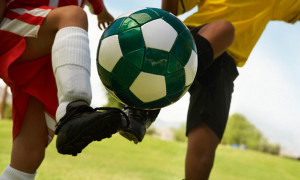Treating and Preventing Sports Hernias
If you play ice hockey, tennis or soccer, you may be at risk for the most commonly misdiagnosed groin pain—a sports hernia. A sports hernia often results from overuse of groin muscles, which causes stress on the groin area.
“Sports hernias are caused by repetitive twisting and turning at high speeds, and are frequently confused with common muscle strain,” says Michael Sampson, DO, a sports medicine physician in Atlanta.
Exercises that increase the strength and flexibility of pelvic muscles can help ward off sports hernias.
Muscle strain is caused when a muscle is stretched beyond its limit, which tears the muscle fibers usually where the muscle meets the tough, connective tissue of the tendon.
Symptoms and Prevention
“The primary symptom of sports hernia is groin pain that may branch out along the hip to the groin area,” says Dr. Sampson.
Other common sports hernia symptoms include pain that:
- Remains for a number of weeks or months.
- Increases with sudden movements, acceleration, twisting and turning, cutting, and kicking.
- Is provoked by coughing and sneezing.
Although men statistically get sports hernias more often than women, Dr. Sampson recommends that all athletes, regardless of their sport, practice exercises targeted at prevention of the condition. Individuals at risk should include exercises that increase flexibility and strengthen the muscles in and around the pelvic area in their daily exercise routine.
Diagnosis and Treatment
Your physician can diagnosis a hernia by asking you to perform certain activities, such as sit-ups, to see whether the movement increases the pain. If the pain intensifies, the possibility of a sports hernia increases.
Rest, ice and anti-inflammatory medications can help ease the pain of a sports hernia.
Sports hernia treatment often includes:
- Rest.
- Using an ice pack on the area for 20 to 30 minutes three to four times a day.
- Taking anti-inflammatory medications.
- If pain persists, surgery is often the next step. During surgery, the lower abdominal muscles and connective tissues are released and reattached. Some hip muscles are also loosened during this process as well.
